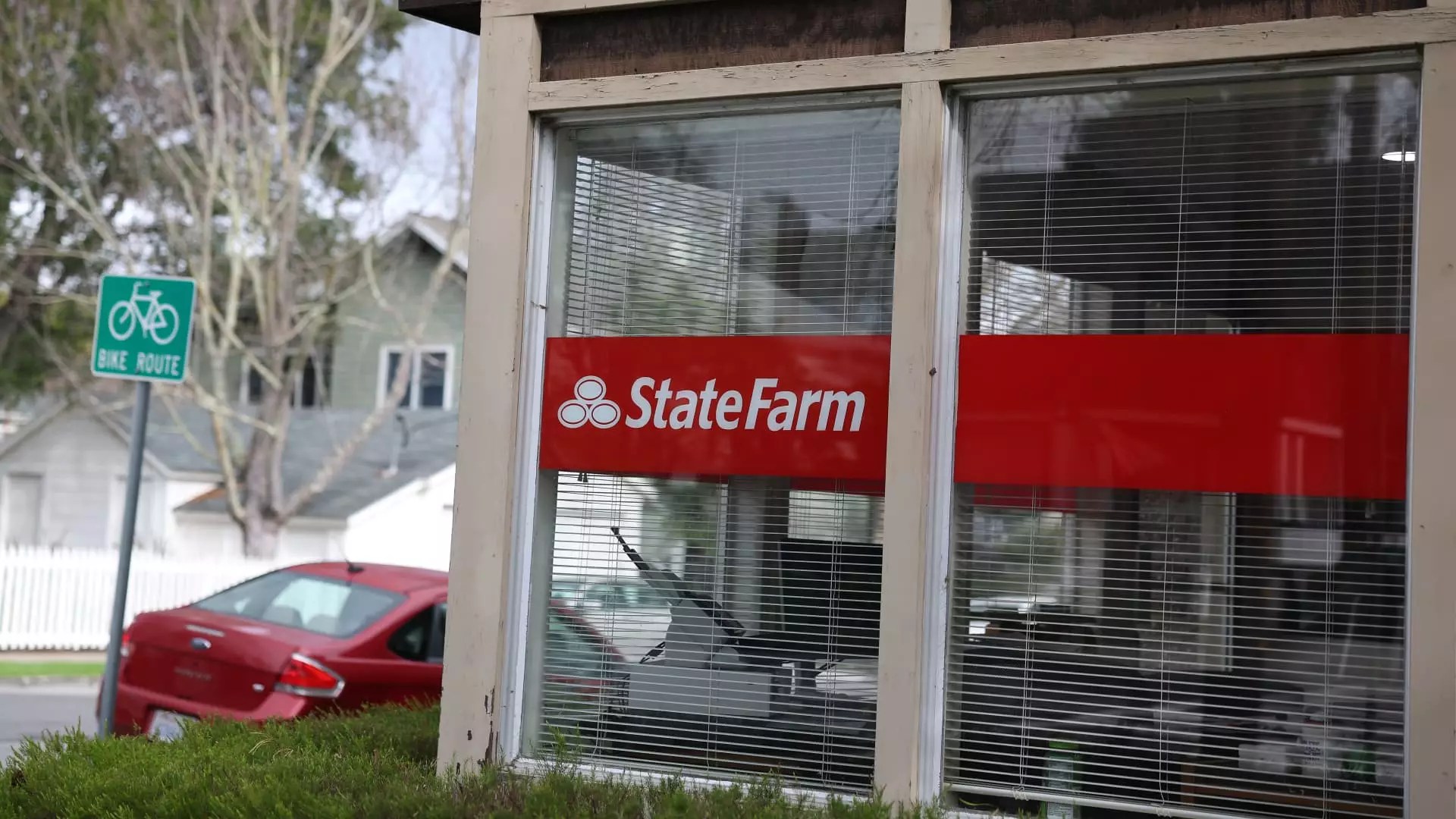State Farm’s current attempt to secure a 17% rate hike for California homeowners reveals a complex intersection of market realities, natural disasters, and legislative hurdles. The alarming statistics coming out of the California property insurance market paint a grim picture: an estimated $250 billion to $275 billion in damages stemming from the Los Angeles wildfires alone. This figure isn’t merely a number; it illustrates the financial devastation that can occur when uncontrollable forces, such as wildfires, collide with the basic need for housing. As one of California’s largest insurers, State Farm is left grappling with the fallout of a broken system that has proven insufficient in the face of such calamities.
The notion that raising rates would alleviate the strain on State Farm’s finances resonates with those who understand the seismic shifts happening within California’s wildfire policy landscape. Attorney Nikki McKennedy’s Titanic analogy encapsulates the weight of this dilemma. Despite the imminent threat to around 3 million California homeowners, it raises a pressing question: do we allow insurers the financial flexibility needed to stay afloat, or do we jeopardize the very safety net that homeowners rely on in emergency situations?
The Unfolding Insurance Crisis
The underlying crisis facing California’s insurers isn’t just about individual companies; it’s a systemic issue that has been brewing for years. In recent times, the insurance sector has found itself on the losing side of the gamble between risk and reward. With natural disasters becoming more frequent and severe, companies like State Farm have had to confront harsh losses. The cost-benefit analysis has become increasingly detrimental. As State Farm reported over $2.75 billion in payouts related to the recent wildfires, it is evident that the ramifications extend beyond their balance sheets, impacting overall stability in the housing market.
In light of extensive financial pressures, it’s not surprising that State Farm halted new homeowners’ insurance in May 2023 and subsequently announced the non-renewal of nearly 72,000 policies. This exodus signifies a growing trend that illustrates a lack of trust in the system. While the company may be trying valiantly to remain solvent, the need for sound regulatory frameworks is absolutely vital. The vast scale of non-renewals should alert policymakers to the reality that existing regulations are outdated and incapable of managing today’s risks.
The Role of Regulation in Stabilizing the Market
California’s Insurance Commissioner Ricardo Lara has been cautious in approving rate hikes. While consumer protection is paramount, it should not come at the cost of market viability. The existing policies reflect a reluctance to adapt to the evolving landscape of risk management. The Sustainable Insurance Strategy introduced by state officials is a step in the right direction, yet it requires effective implementation to foster a climate where insurers can recoup costs while also managing risk responsibly.
Consumer advocacy groups like Consumer Watchdog argue against the rate hikes presented by State Farm, emphasizing the need for transparency and accountability. The shift from a proposed 22% to a 17% increase does indicate a level of responsiveness to public concerns, but it also raises flags about the insurer’s long-term viability. William Pletcher of Consumer Watchdog has articulated hesitance regarding the justification for such raises, a sentiment many resonate with, given the multifaceted layers of this crisis.
Potential Outcomes and Implications
The stakes are high; if premium rates continue to be suppressed under current regulations, the consequences could be dire for both insurers and homeowners alike. A failure to provide sufficient funding could usher in a new era where insurance becomes unmanageable or, even worse, completely unavailable in high-risk areas. The FAIR plan designed as a safety net has grown astronomically insufficient, indicating that the state must rethink its long-term insurance strategies.
If State Farm manages to secure the requested increases, it will likely provide much-needed capital to stabilize its operations. This newfound stability could induce further investment in the state, particularly in risk mitigation technologies and other measures aimed at curtailing disaster-related losses. However, if these increases are denied, the ramifications could further exacerbate the current crisis, complicating the financial landscape not just for State Farm, but for all players in the California insurance market.
With the administrative hearing scheduled to conclude shortly, all eyes are on the decision that could either reinforce a failing system or create pathways toward recovery. In this precarious situation, a balance must be struck—one that safeguards consumer interests while also enabling insurers to manage the risks associated with a state grappling with unprecedented natural phenomena.


Leave a Reply